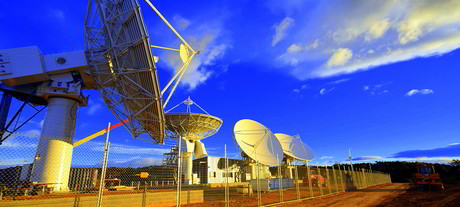Reduced satellite taxes welcomed

The ACMA has agreed to reduce Ka band satellite licence taxes by between 30% and 100% in response to industry calls.
The ACMA has announced reduced taxes for a variety of satellite communications licences, following a review in which it received submissions from the communications industry.
The review concentrated on the Ka band (which the ACMA took to be 17.3–51.4 GHz), although some other non-Ka band services were also considered.
According to the ACMA, “Given the evidence that current taxes are high compared with international standards, the band is currently underutilised, and tax reductions are likely to encourage more efficient use of the spectrum, the ACMA has decided to implement the tax reductions proposed in the consultation paper for satellite services in the 17.3–51.4 GHz frequency range.”
Those reductions are:
- 30% tax reductions for Australia-wide and high density area (HDA) licences.
- 50% tax reductions for medium density area (MDA) and low density area (LDA) licences.
- 100% tax reductions for remote density area (RDA) licences so that licensees are subject to the minimum annual tax in these areas.
In its report, the ACMA said that submissions “generally supported these tax reductions, but argued for larger reductions for licences in HDAs and Australia-wide licences”.
The regulator also noted that “the level of tax reduction balances the need to promote more satellite investment in Australia in these high frequency bands, while managing the risk of spectrum congestion occurring in the near future”.
“Due to these reasons, the ACMA has decided not to proceed with larger tax reductions suggested by some submitters.
It added that parts of this spectrum range “are being considered for 5G services by the International Telecommunication Union (ITU), and so the ACMA believes that more moderate tax reductions are prudent at this time as it assesses any relationships between 5G spectrum demand and satellite services in the Ka band”.
Responding to the announcement, the Communications Alliance said that it “welcomes the new tax arrangements for satellite apparatus licences... a move that industry agrees should encourage more efficient use of spectrum and encourage greater investment in the satellite sector in Australia”.
In a statement, the Alliance said that the announcement “comes more than three years after the Satellite Services Working Group (SSWG) within Communications Alliance began discussions with the regulator for a review of satellite spectrum pricing methodologies — particularly in the Ka frequency band”.
“The SSWG had identified that some satellite spectrum prices in effect in Australia were high in comparison with international standards — a finding that was endorsed by the ACMA review — and that this was hampering investment in the sector in Australia.”
“The ACMA has acknowledged that making Australia’s pricing structure more aligned with international norms should mean that Australia can derive greater value from the space sector, which already contributes more than $4 billion per annum to Australia’s GDP,” said SSWG Chair and Communications Alliance CEO John Stanton.
The SSWG represents more than 15 different satellite-related operators active in Australia.
“[The] announcement — although a long time coming — is a welcome recognition that industry and regulators can work together to achieve rational and nationally beneficial economic outcomes,” Stanton said.
RFUANZ report: setting the frequency for success in 2025
Last year brought a lot of internal change for RFUANZ, but the association has hit the ground...
ARCIA update: an extended event calendar for 2025
With the addition of Tasmanian events and a conference in Adelaide in September, 2025 will see...
ARCIA update: plans for 2025
ARCIA will be holding a mixture of workshop, conference and networking events in 2025, in the...





